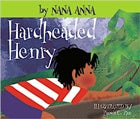
If you’re looking to buy new Black children’s books this holiday season it may not be as easy as you think. When looking for books for my 7-year-old niece, I visited 4 bookstores in downtown Chicago. Not one of these stores had a children’s book featuring Black children. And many of the most popular Black books for sale on Amazon are 8 to 25 years old. Why is this cultural omission still prevalent in the United States?
For 30 years, the University of Wisconsin’s Cooperative Children’s Book Center (CCBC), has released statistics on the number of children’s books, by and about people of color. In 2016, of the 3400 children’s books published, 287 wereabout Black people, but of those, only 94 were written by Black people. Sadly, this is 13% fewer Black children’s book authors than were published in 2015. In fact, Black, Latina, and Native American authors combined wrote just 6% of new children’s books published in 2016.
The problem is not just in the United States. I went to the Bologna Children’s International Book Fair in Bologna, Italy, in May of this year. Hundreds of publishers from around the world were promoting their books and most of them had no people of color. Most children’s books feature white people or animals, from all over the world, but no people of color. It’s heartbreaking.
I know I may be preaching to the choir, but I think it’s important to understand why Black children’s books are important. The following are 7 reasons why it’s important for all children to read books with a diversity of characters.
1. Books are a powerful way of helping children understand their family, their neighborhoods and the world in which they live.
2. It helps children gain a better understanding of themselves.
3. Children can learn to respect other cultural groups, and even celebrate their
differences.
4. Books by Black and Latino authors help counter stereotype portrayals of characters and situations.
5. These books provide a realistic look into the lives of diverse populations, and increase a child’s sensitivity to other ethnic groups.
6. Multicultural books have been proven to have a positive developmental effect on children of all backgrounds.
7. When a child reads a story about their own ethnic group it increases their self-esteem.
One of the challenges I discovered in my research, is that very few Black authors and illustrators have been able to get any work from the major children’s book publishing companies. We can do something about this. And if large publishing houses are not interested, then we as a community, should band together and create the change we want to see. We, the community, must write and publish these books. That’s something I’m working on — encouraging writer’s in my community to write these stories and providing an opportunity for Black children’s authors and illustrators to get published, for the first time. But I’m not alone. Many children’s authors are taking control of their writing dream and self-publishing their own work. They sell their work on Amazon, at book fairs and in local stores in their cities.

The African Proverb says, “It takes a village to raise a child.” It’s going to take the community working together, to create greater diversity in children’s books.

